The region’s most ambitious causeway projects
8 February 2023

The submission of feedback questionnaires and meetings with contractors for the planned second causeway connecting Saudi Arabia and Bahrain is the latest sign of potential progress on one of the region’s largest infrastructure projects.
Causeways have a chequered history in the region. The first causeway connecting Saudi Arabia and Bahrain was completed during the 1980s, and since then, it has had a transformative impact on the Bahraini economy.
The project’s success has inspired other causeways. But while these schemes remain ambitions for many in the region, construction progress has been limited. The hope is that a successful second causeway linking Saudi Arabia and Bahrain will foster the delivery of other longstanding causeway plans.
These are the most ambitious causeway schemes that the region has planned:
| Second Saudi Arabia-Bahrain causeway |
The second causeway between Saudi Arabia and Bahrain is the most likely to proceed. Planned by the King Fahd Causeway Authority, the $3.5bn project, which has been called the King Hamad Causeway project, is moving towards construction.
In 2021, senior government officials in Bahrain told MEED that the project was progressing towards tendering as financial studies had been completed.
The project was included in Bahrain’s $30bn Strategic Projects Plan that was announced later in 2021. As well as the causeway, the plan includes building new urban areas on five reclaimed islands to increase the country’s total land area by 60 per cent. It also comprises plans for a new airport.
The second causeway involves building a 25-kilometre road and rail crossing linking Saudi Arabia and Bahrain. It will follow the same alignment as the existing King Fahd Causeway.
It has been earmarked for delivery on a public-private partnership (PPP) basis. The King Fahd Causeway Authority appointed a consortium to provide transaction advisory services in late 2019.
The $8.9m consultancy agreement was signed with a consortium of Netherlands-headquartered KPMG, US-based Aecom and UK-based CMS. The team was tasked with working on developing the financing model, the required engineering specifications and design, as well as helping with the assessment and selection of the project’s developers.
Canada-based SNC Lavalin and UK-based consultancy firm PwC conducted the project due diligence study in 2017.
The existing King Fahd Causeway is operating at capacity. About 11.5 million cars cross the causeway every year, and the growth has been 6 per cent per annum over the past 10 years.

| Qatar-Bahrain causeway |
There have also been suggestions that the proposed causeway bridging Bahrain and Qatar may be revived. In March 2022, Manama called for work to restart on the causeway joining the two countries.
“We in the Kingdom of Bahrain renew the call for the start of bilateral talks between the two sides in accordance with the mechanisms agreed upon in the Al-Ula statement,” said Bahrain’s undersecretary for land transportation and post in an official statement published by the official Bahrain News Agency.
The estimated $4bn Qatar-Bahrain causeway project was put on hold and the contracting consortium demobilised in 2010.
A joint venture of state-owned developer Qatari Diar Real Estate Investment Company and French contractor Vinci Construction Grand Projets led the consortium. The other consortium members were Germany’s Hochtief, Athens-based Consolidated Contractors Company (CCC), Dredging International from Belgium and the local Middle East Dredging Company (Medco).
The planned 40km bridge includes a four-lane motor crossing scheduled for completion in 2013 and two railway lines forming part of the GCC rail network.
The project also comprises 22km of bridges and viaducts, 18km of embankments and two 400-metre cable-stayed bridges. The causeway connects Ras Ashairij on the west coast of Qatar to Askar on the east coast of Bahrain.
The project was also known as the Friendship Bridge and was to be jointly funded by the Qatari and Bahraini governments, which intended to recover some of the construction costs by implementing a toll system on the bridge.
The crossing would cut the journey time between the two countries, which currently involves a detour through Saudi Arabia, from five hours to just 30 minutes.
| Saudi Arabia-Egypt causeway |
The prospects for the causeway connecting the $500bn Neom project in Saudi Arabia and Egypt’s Sinai Peninsula across the Straits of Tiran improved last year after US President Joe Biden’s visit to Saudi Arabia.
After the visit, a joint communique issued by Washington and Riyadh referred to the development of Tiran Island.
“President Biden welcomed the arrangements by Saudi Arabia to remove the Multinational Force & Observers (MFO) from the Island of Tiran, including the removal of US troops there as part of the MFO mission, while preserving and continuing all existing commitments and procedures in the area,” it said.
“This area of the Red Sea will now be developed for tourism and economic purposes, contributing to a more secure, peaceful and prosperous region.”
The US-Egyptian-Israeli-backed MFO was founded in 1981 to oversee the terms of the 1978 Camp David Accords, which included the full Israeli withdrawal from the Sinai Peninsula.
In 2016, Egypt and Saudi Arabia agreed during a state visit to Cairo by King Salman bin Abdulaziz al-Saud to develop a causeway linking the two countries across the Red Sea.
The agreement was made as part of a broader deal that would also involve Egypt ceding the sovereignty of the two Tiran islands to Saudi Arabia.
While details of the proposed crossing were never revealed at the time, it was understood to be a revival of a $4bn project announced in 2011. That scheme involved building a 32km crossing stretching over the Straits of Tiran from Ras Humaid in Tabuk, in the northern region of Saudi Arabia, to Ras Nasrani, close to the Egyptian resort of Sharm el-Sheikh.
Plans to link Saudi Arabia and Egypt are far from new. The development of a causeway was first mooted as far back as 1988. However, the idea has received additional focus in recent years following the launch of the Neom development in northwestern Saudi Arabia, which includes Ras Humaid. Part of the Neom scheme, the 170km-long linear city known as The Line, will extend from the promontory inland to the city of Tabuk.
UK-based Arup was reported to have been selected in 2019 for the next stage of the feasibility study for the causeway.
Saudi Arabia was understood to be considering using a public-private partnership (PPP) model for the scheme, similar to other transport projects planned in and around the kingdom.
| Yemen-Djibouti causeway |
A 28.5km causeway was planned to connect Yemen and Djibouti before the scheme was put on hold in 2010 until the governments of both countries signed the framework agreement for the project. The civil war in Yemen means it is unlikely the scheme will make any progress soon.
The estimated $20bn first phase involved building the link between the Yemeni mainland to the island of Perim in the Red Sea. Phase two would have then connected Perim with Djibouti.
The wider project also involves building two cities at each end of the link. The total investment required to construct the cities and the bridge is $200bn.
Dubai-based Al-Noor Holding Investment Company was developing the project.
In 2009, the company said it expected to award a build-operate-transfer contract for the first phase of the bridge and that three companies had expressed interest in funding and building the road and rail link. Denmark’s Cowi prepared the preliminary design for the crossing.
| UAE-Qatar causeway |
In 2005, Abu Dhabi and Doha were reported to have been setting up a joint company to oversee the implementation of the proposed UAE/Qatar causeway.
The 40km causeway was expected to start near Sila in Abu Dhabi emirate and extend to the south of Doha.
The estimated $13bn crossing would have significantly cut journey times. At present, traffic between Qatar and the UAE has to pass through 125km of Saudi Arabian territory.
The scheme stalled shortly afterwards. Problems included difficulties with the route, which ran through Saudi Arabian territorial waters.
Exclusive from Meed
-
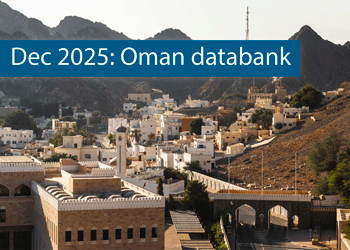 Oman’s growth forecast points upwards
Oman’s growth forecast points upwards24 December 2025
-
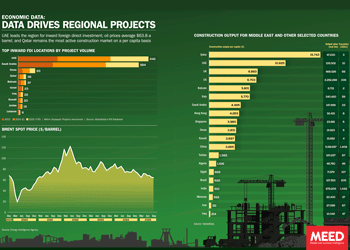 December 2025: Data drives regional projects
December 2025: Data drives regional projects23 December 2025
-
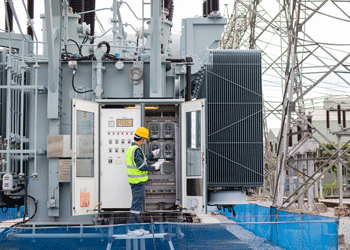 Local firm bids lowest for Kuwait substation deal
Local firm bids lowest for Kuwait substation deal22 December 2025
-
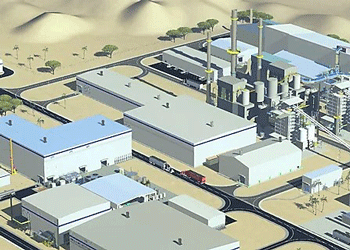 Saudi-Dutch JV awards ‘supercentre’ metals reclamation project
Saudi-Dutch JV awards ‘supercentre’ metals reclamation project22 December 2025
-
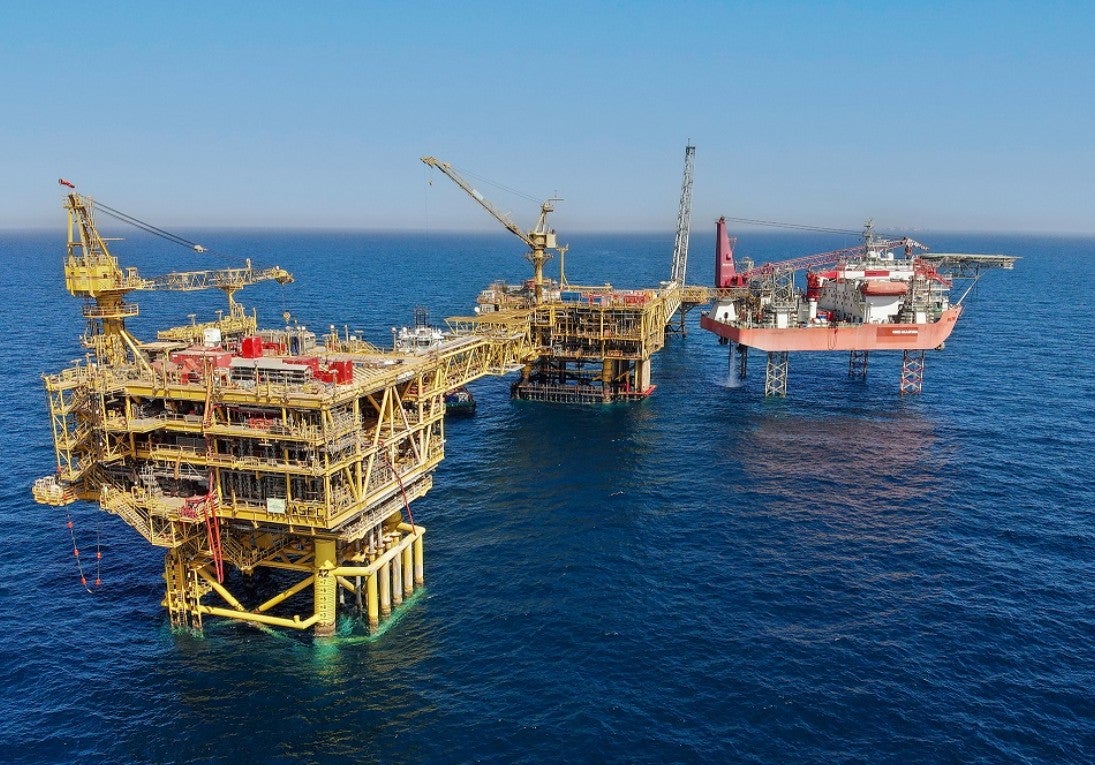 QatarEnergy LNG awards $4bn gas project package
QatarEnergy LNG awards $4bn gas project package22 December 2025
All of this is only 1% of what MEED.com has to offer
Subscribe now and unlock all the 153,671 articles on MEED.com
- All the latest news, data, and market intelligence across MENA at your fingerprints
- First-hand updates and inside information on projects, clients and competitors that matter to you
- 20 years' archive of information, data, and news for you to access at your convenience
- Strategize to succeed and minimise risks with timely analysis of current and future market trends

Related Articles
-
 Oman’s growth forecast points upwards
Oman’s growth forecast points upwards24 December 2025

MEED’s January 2026 report on Oman includes:
> COMMENT: Oman steadies growth with strategic restraint
> GVT & ECONOMY: Oman pursues diversification amid regional concerns
> BANKING: Oman banks feel impact of stronger economy
> OIL & GAS: LNG goals galvanise Oman’s oil and gas sector
> POWER & WATER: Oman prepares for a wave of IPP awards
> CONSTRUCTION: Momentum builds in construction sectorTo see previous issues of MEED Business Review, please click herehttps://image.digitalinsightresearch.in/uploads/NewsArticle/15306449/main.gif -
 December 2025: Data drives regional projects
December 2025: Data drives regional projects23 December 2025
Click here to download the PDF
Includes: Top inward FDI locations by project volume | Brent spot price | Construction output
MEED’s January 2026 report on Oman includes:
> COMMENT: Oman steadies growth with strategic restraint
> ECONOMY: Oman pursues diversification amid regional concerns
> BANKING: Oman banks feel impact of stronger economy
> OIL & GAS: LNG goals galvanise Oman’s oil and gas sector
> POWER & WATER: Oman prepares for a wave of IPP awards
> CONSTRUCTION: Momentum builds in construction sectorTo see previous issues of MEED Business Review, please click herehttps://image.digitalinsightresearch.in/uploads/NewsArticle/15306140/main.gif -
 Local firm bids lowest for Kuwait substation deal
Local firm bids lowest for Kuwait substation deal22 December 2025
The local Al-Ahleia Switchgear Company has submitted the lowest price of KD33.9m ($110.3m) for a contract to build a 400/132/11 kV substation at the South Surra township for Kuwait’s Public Authority for Housing Welfare (PAHW).
The bid was marginally lower than the two other offers of KD35.1m and KD35.5m submitted respectively by Saudi Arabia’s National Contracting Company (NCC) and India’s Larsen & Toubro.
PAHW is expected to take about three months to evaluate the prices before selecting the successful contractor.
The project is one of several transmission and distribution projects either out to bid or recently awarded by Kuwait’s main affordable housing client.
This year alone, it has awarded two contracts worth more than $100m for cable works at its 1Z, 2Z, 3Z and 4Z 400kV substations at Al-Istiqlal City, and two deals totalling just under $280m for the construction of seven 132/11kV substations in the same township.
Most recently, it has tendered two contracts to build seven 132/11kV main substations at its affordable housing project, west of Kuwait City. The bid deadline for the two deals covering the MS-01 through to MS-08 substations is 8 January.
https://image.digitalinsightresearch.in/uploads/NewsArticle/15305745/main.gif -
 Saudi-Dutch JV awards ‘supercentre’ metals reclamation project
Saudi-Dutch JV awards ‘supercentre’ metals reclamation project22 December 2025
The local Advanced Circular Materials Company (ACMC), a joint venture of the Netherlands-based Shell & AMG Recycling BV (SARBV) and local firm United Company for Industry (UCI), has awarded the engineering, procurement and construction (EPC) contract for the first phase of its $500m-plus metals reclamation complex in Jubail.
The contract, estimated to be worth in excess of $200m, was won by China TianChen Engineering Corporation (TCC), a subsidiary of China National Chemical Engineering Company (CNCEC), following the issue of the tender in July 2024.
Under the terms of the deal, TCC will process gasification ash generated at Saudi Aramco’s Jizan refining complex on the Red Sea coast to produce battery-grade vanadium oxide and vanadium electrolyte for vanadium redox flow batteries. AMG will provide the licensed technology required for the production process.
The works are the first of four planned phases at the catalyst and gasification ash recycling ‘Supercentre’, which is located at the PlasChem Park in Jubail Industrial City 2 alongside the Sadara integrated refining and petrochemical complex.
Phase 2 will expand the facility to process spent catalysts from heavy oil upgrading facilities to produce ferrovanadium for the steel industry and/or additional battery-grade vanadium oxide.
Phase 3 involves installing a manufacturing facility for residue-upgrading catalysts.
In the fourth phase, a vanadium electrolyte production plant will be developed.
The developers expect a total reduction of 3.6 million metric tonnes of carbon dioxide emissions a year when the four phases of the project are commissioned.
SARBV first announced its intention to build a metal reclamation and catalyst manufacturing facility in Saudi Arabia in November 2019. The kingdom’s Ministry of Investment, then known as the Saudi Arabian General Investment Authority (Sagia), supported the project.
In July 2022, SARBV and UCI signed the agreement to formalise their joint venture and build the proposed facility.
The project has received support from Saudi Aramco’s Namaat industrial investment programme. Aramco, at the time, also signed an agreement with the joint venture to offtake vanadium-bearing gasification ash from its Jizan refining complex.
Photo credit: SARBV
https://image.digitalinsightresearch.in/uploads/NewsArticle/15305326/main.gif -
 QatarEnergy LNG awards $4bn gas project package
QatarEnergy LNG awards $4bn gas project package22 December 2025
QatarEnergy LNG, a subsidiary of state-owned QatarEnergy, has awarded the main engineering, procurement, construction and installation (EPCI) contract for a major package for the second phase of its North Field Production Sustainability (NFPS) project.A consortium comprising the Italian contractor Saipem and state-owned China Offshore Oil Engineering Company (COOEC) has secured the EPCI contract for the COMP5 package. The contract value is $4bn, with Saipem declaring its share to be worth $3.1bn.
Milan-headquartered Saipem said the contract will run for about five years. The scope of work comprises engineering, procurement, fabrication and installation of two compression complexes, each including a compression platform, a living quarters platform, a flare platform supporting the gas combustion system, and the related interconnecting bridges. Each complex will have a total weight of about 68,000 tonnes.
Offshore installation operations will be carried out by Saipem’s De He construction vessel in 2029 and 2030.
MEED previously reported that the following contractors submitted bids for the NFPS phase two COMP5 package:
- Larsen & Toubro Energy Hydrocarbon (India)
- McDermott (US)
- Saipem/China Offshore Oil Engineering Company (Italy/China)
QatarEnergy LNG, formerly Qatargas, is said to have issued the tender for the NFPS phase two COMP5 package in the first quarter of the year.
Contractors submitted technical bids for the COMP5 package in late June, while commercial bids were submitted by 8 October, as per sources.
Based upon initial evaluation of bids by QatarEnergy LNG, L&TEH has emerged as the lowest bidder for the COMP5 package, followed by McDermott, with the consortium of Saipem and COOEC in third place, MEED reported in late October.
In the weeks following that, the project operator is said to have engaged all bidders for a final round of negotiations, during which the consortium of Saipem and COOEC is believed to have “clinched the deal”, according to sources.
The detailed scope of work on the COMP5 package covers the EPCI work on the following:
- Two gas compression platforms, each weighing 30,000-35,000 tonnes, plus jacket
- Two living quarters platforms, plus jacket
- Two gas flare platforms, plus jacket
- Brownfield modification work at two complexes
NFPS scheme
QatarEnergy’s North Field liquefied natural gas (LNG) expansion programme requires the state enterprise to pump large volumes of gas from the North Field offshore reserve to feed the three phases of the estimated $40bn-plus programme.
QatarEnergy has already invested billions of dollars in engineering, procurement and construction works on the two phases of the NFPS project, which aims to maintain steady gas feedstock for the North Field LNG expansion phases.
The second NFPS phase will mainly involve building gas compression facilities to sustain and gradually increase gas production from Qatar’s offshore North Field gas reserve over the long term.
Saipem has been the most successful contractor on the second NFPS phase, securing work worth a total of $8.5bn.
QatarEnergy LNG awarded Saipem a $4.5bn order in October 2022 to build and install gas compression facilities. The main scope of work on the package, which is known as EPCI 2, covers two large gas compression complexes that will comprise decks, jackets, topsides, interconnecting bridges, flare platforms, living quarters and interface modules.
The gas compression complexes – CP65 and CP75 – will weigh 62,000 tonnes and 63,000 tonnes, respectively, and will be the largest fixed steel jacket compression platforms ever built.
Following that, Saipem won combined packages COMP3A and COMP3B of the NFPS project’s second phase in September last year.
The scope of work on the combined packages encompasses the EPCI of a total of six platforms, approximately 100 kilometres (km) of corrosion resistance alloy rigid subsea pipelines of 28-inches and 24-inches diameter, 100km of subsea composite cables, 150km of fibre optic cables and several other subsea units.
Separately, QatarEnergy LNG awarded McDermott the contract for the NFPS second phase package known as EPCI 1, or COMP1, in July 2023. The scope of work on the estimated $1bn-plus contract is to install a subsea gas pipeline network at the North Field gas development.
In March this year, India’s Larsen & Toubro Energy Hydrocarbon (LTEH) won the main contract for the combined 4A and 4B package, which is the fourth package of the second phase of the NFPS project and is estimated to be valued at $4bn-$5bn.
The main scope of work on the package is the EPCI of two large gas compression systems that will be known as CP8S and CP4N, each weighing 25,000-35,000 tonnes. The contract scope also includes compression platforms, flare gas platforms and other associated structures.
LTHE sub-contracted detailed engineering and design works on the combined 4A and 4B package to French contractor Technip Energies.
NFPS first phase
Saipem is also executing the EPCI works on the entire first phase of the NFPS project, which consists of two main packages.
Through the first phase of the NFPS scheme, QatarEnergy LNG aims to increase the early gas field production capacity of the North Field offshore development to 110 million tonnes a year.
QatarEnergy LNG awarded Saipem the contract for the EPCI package in February 2021. The package is the larger of the two NFPS phase one packages and has a value of $1.7bn.
Saipem’s scope of work on the EPCI package encompasses building several offshore facilities for extracting and transporting natural gas, including platforms, supporting and connecting structures, subsea cables and anti-corrosion internally clad pipelines.
The scope of work also includes decommissioning a pipeline and other significant modifications to existing offshore facilities.
In addition, in April 2021, QatarEnergy LNG awarded Saipem two options for additional work within the EPCI package, worth about $350m.
QatarEnergy LNG awarded Saipem the second package of the NFPS phase one project, estimated to be worth $1bn, in March 2021.
Saipem’s scope of work on the package, which is known as EPCL, mainly covers installing three offshore export trunklines running almost 300km from their respective offshore platforms to the QatarEnergy LNG north and south plants located in Ras Laffan Industrial City.
Saipem performed the front-end engineering and design work on the main production package of the first phase of the NFPS as part of a $20m contract that it was awarded in January 2019. This provided a competitive advantage to the Italian contractor in its bid to win the package.
https://image.digitalinsightresearch.in/uploads/NewsArticle/15305330/main2239.jpg


